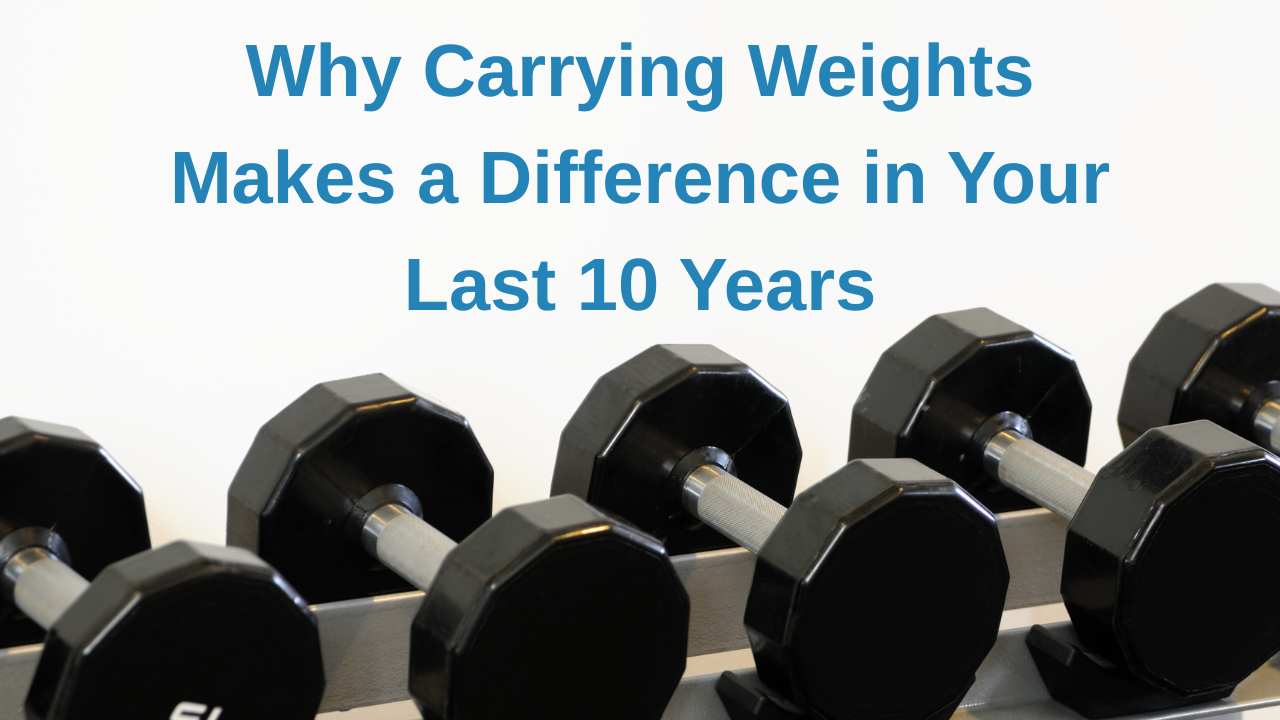
01 Oct Why Carrying Weights Makes such a Difference in Your Last 10 Years
Imagine a woman in her 70s lifting her groceries with ease, a broad smile on her face as she tackles the stairs two at a time. Now picture her neighbour the same age, relying on a walker and growing frustrated with every minor task. Both people have the same number of years, but their lives look very different. The secret between these stories often comes down to one choice: strength training. Carrying weights isn’t just about looking fit. It’s about keeping your body and mind strong, healthy, and independent as the years tick by. Here’s how building muscle makes your final years more vibrant, more mobile and, frankly, more you.
How Age Changes Our Bodies—and What Weight Training Does About It
As we age, our bodies naturally lose some strength and the bounce in our steps gets tested. This is mostly because of a slow but steady drop in muscle mass and bone density, a slower metabolism, and joints that don’t bend or move like they used to.
But here’s the powerful truth: you have more control over this process than you think. Carrying weights can slow, stop, even reverse some age-related declines. Muscles get stronger, bones denser, and you keep the freedom to chase the life you want in your 60s, 70s, 80s and beyond.
Sarcopenia: Why We Lose Strength and Muscle as We Age
Sarcopenia is the muscle loss that sneaks up after age 40. On average, we lose about 3 to 8 percent of muscle each decade after that. That means everyday tasks like lifting shopping bags, getting out of a chair, or even walking upstairs can become harder each year if you don’t stay ahead of the curve.
You’re not just losing muscle; you’re also losing protection. Less muscle makes falls and injuries more likely, weakens your balance, and reduces your body’s ability to recover from illness. The real

danger lies not in getting older, but in feeling powerless to stop this slide.
Weight Training: Your Best Defence Against Muscle and Bone Loss
Think of your muscles as your own internal armour. When you train them with resistance—like carrying weights—they fight to stay strong. Weight training builds new muscle fibres and thickens the ones you already have.
Bones react, too. Resistance puts healthy stress on bones, signalling them to grow stronger and increase in density. This matters, because fragile bones break easily, especially in a simple fall. Weight training supports your joints and builds flexibility, rather than just bulking you up.
You don’t need to be Olympic-level. Simple movements with dumbbells, kettlebells, or even shopping bags can help:
- Squats and lunges with light weights protect knees and hips
- Lifting cans or small hand weights during daily routines keeps arms strong
- Resistance bands add easy, joint-friendly strength to any workout
The Last 10 Years: The Real Difference Carrying Weights Makes
The final decade of life is where your choices really show. It’s the line between living and just being alive. Staying strong gives you the chance to spend your last years on your terms.
Research shows that regular strength training delivers:

- Fewer falls and fractures
- Better balance and walking speed
- More energy for fun, family and travel
- Lower risk of hospital stays and nursing home care
But the perks go much deeper than just physical strength.
Staying Independent, Active and Safe
Few people dream of moving into a nursing home. Independence means you can take care of yourself, cook, bathe, and get out with friends. Strong muscles keep you moving freely, making it easier to handle all of life’s basics.
Those last ten years can include:
- Shopping, gardening, or even playing with grandkids without pain
- Enjoying daily routines without fear of falling or needing help
- Living with confidence, not tiptoeing around your own home
Regular weight training makes it much more likely you’ll stay in your home, living life on your terms.
Boosting Brain Power and Emotional Well-being
The greatest surprise in ageing research? Lifting weights often sharpens your mind along with your body.
People who stick with strength training in later years tend to have:
- Better memory and quicker thinking
- Lower risk of depression and anxiety
- Higher self-esteem and motivation for other healthy habits
Lifting weights encourages the release of endorphins, those feel-good brain chemicals that lift your mood. Strong bodies signal to the brain that you’re capable, present, and still engaged with the world.
Scientists have even found that carrying weights can increase the size of parts of the brain linked to thinking and memory, slashing the risk of dementia.
Conclusion
Carrying weights isn’t just for bodybuilders, athletes or the young. It’s for anyone who wants a say in how they age. The final years of your life can be full of movement, laughter, and purpose—if you protect your strength.
Start small. Pick up light weights while watching TV, or add a few squats while brushing your teeth. Every repetition is a vote for your health, independence and happiness.
The best day to start? Today. Your future self will thank you.
It is important to note that the specific interventions and strategies employed by any medical practitioner will depend on the individual’s unique needs. Each practitioner in a care team will work collaboratively with each other to provide comprehensive care and support for the individual.
If there is a part of your condition or injury that you are struggling to understand, be sure to seek clarification with your medical professional. None of the information in this article is a replacement for proper medical advice. Always seek advice from your trusted medical professional regarding your health and/or medical conditions.
